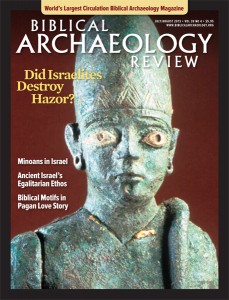
In our March/April issue we printed an article urging that the Megiddo dumps be wet-sifted, citing numerous important finds that have been discovered in this way elsewhere.a Since the publication of this article, we have learned of another important discovery from a dump, despite the fact that the dump was produced by a first-class professional excavation—in this case at the major site of Hazor in northern Israel (see article in this issue).
The Hazor dump was created during the excavation of the famous ceremonial palace. When Israel’s Nature and Parks Authority needed some dirt fill to create a visitor’s path at the site, they took it from this dump. At this point two fragments of cuneiform tablets were discovered on the surface of the new path—showing again how rich excavation dumps can be.
In this case the cuneiform tablets apparently formed part of a law collection contemporaneous with and similar to the well-known Code of Hammurabi. As the scholars who studied and published the two fragments state, “The discovery of a cuneiform law collection at Hazor may place Hazor among a select group of independent capitals and kingdoms to have issued their own set of laws ... In other words [Hazor was] a city of the first and most important rank ruled by a great king.”1
The question remains: What lies buried in the Megiddo dumps?—H.S.
Already a library member? Log in here.
Institution user? Log in with your IP address.

